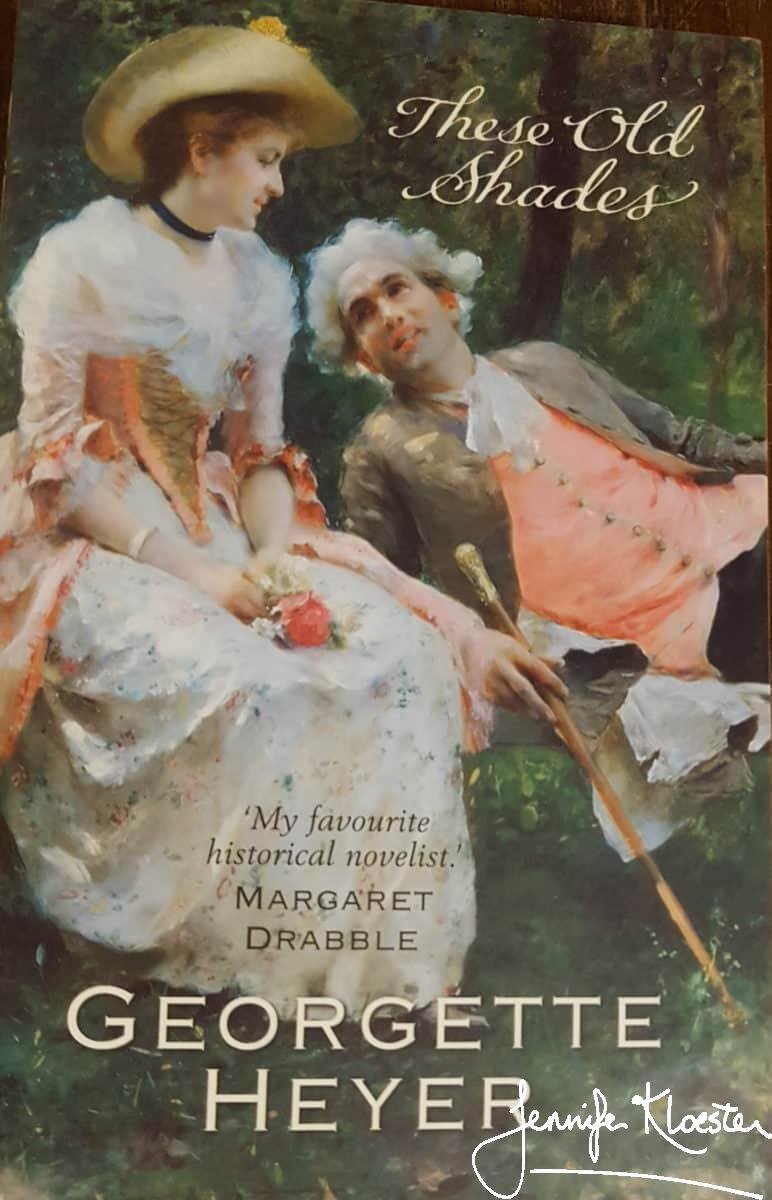
Changes
On 15 June 1925 George Heyer had a heart attack and died in front of his 22-year-old daughter. Georgette never fully recovered from the loss and her father’s death changed everything for her family. Her mother, Sylvia, had lost her husband and the family breadwinner and for the rest of her life she would live in hotels and rented rooms, never fully adjusting to the life of a genteel, middle-class widow. Georgette’s brothers were only 13 and 17 when their father died and it soon became clear that their older sister would need to help the family financially – no easy task. Caring deeply for Georgette and only recently returned from Africa, her old beau, Ronald Rougier asked her to marry him. On 20 July 1925, only one month after her father’s death, an announcement appeared in The Times.
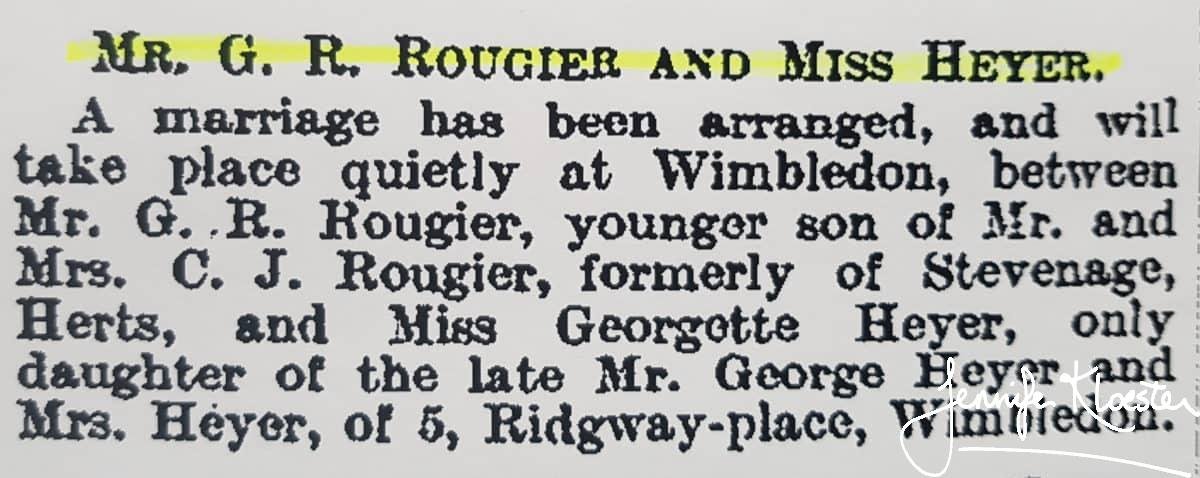
A wedding
On 16 August, Georgette turned 23. Two days later on 18 August 1925 she married George Ronald Rougier at St Mary’s Church, Wimbledon. It was just two months after her father’s death and so the wedding was just a small, simple one. Georgette had still not been able to return to her writing and must have doubted her ability to do so, for instead of writing “author” she put a line through the box on her marriage certificate marked “Rank or Profession”. It would take more than a year for Georgette to begin writing an entirely new book but completing These Old Shades would help her find her way back to the literary world she loved.

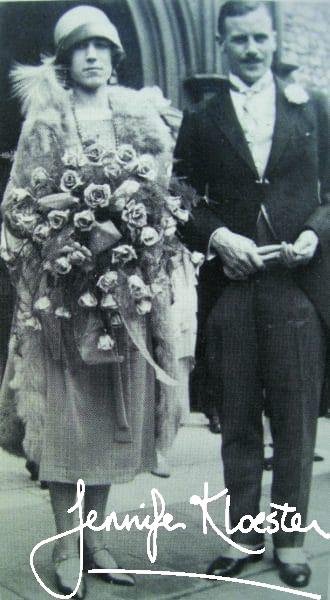

These Old Shades
Georgette eventually returned to the manuscript she had begun in 1922 and for which she had so enthusiastically made plans in her 1923 letter to her agent. In the first half of 1926, several months after her father’s death, she finished the book and sent the manuscript to her publisher. On 21 October 1921, Heinemann published These Old Shades. Georgette inscribed her advance copy to her new husband with an affectionate message and a hint of her old humour. The exuberance with which she had written the bulk of the book four years earlier would never fully return. Her father’s tragic passing had been a cataclysm in her life and it marked a distinct change in his daughter. It was from this time that Georgette Heyer began eschewing publicity. This was the beginning of her lifelong refusal to market herself or her books through interviews, book signings or public appearances. Though her fans would later regret her stance, it did not affect sales of These Old Shades in the slightest.
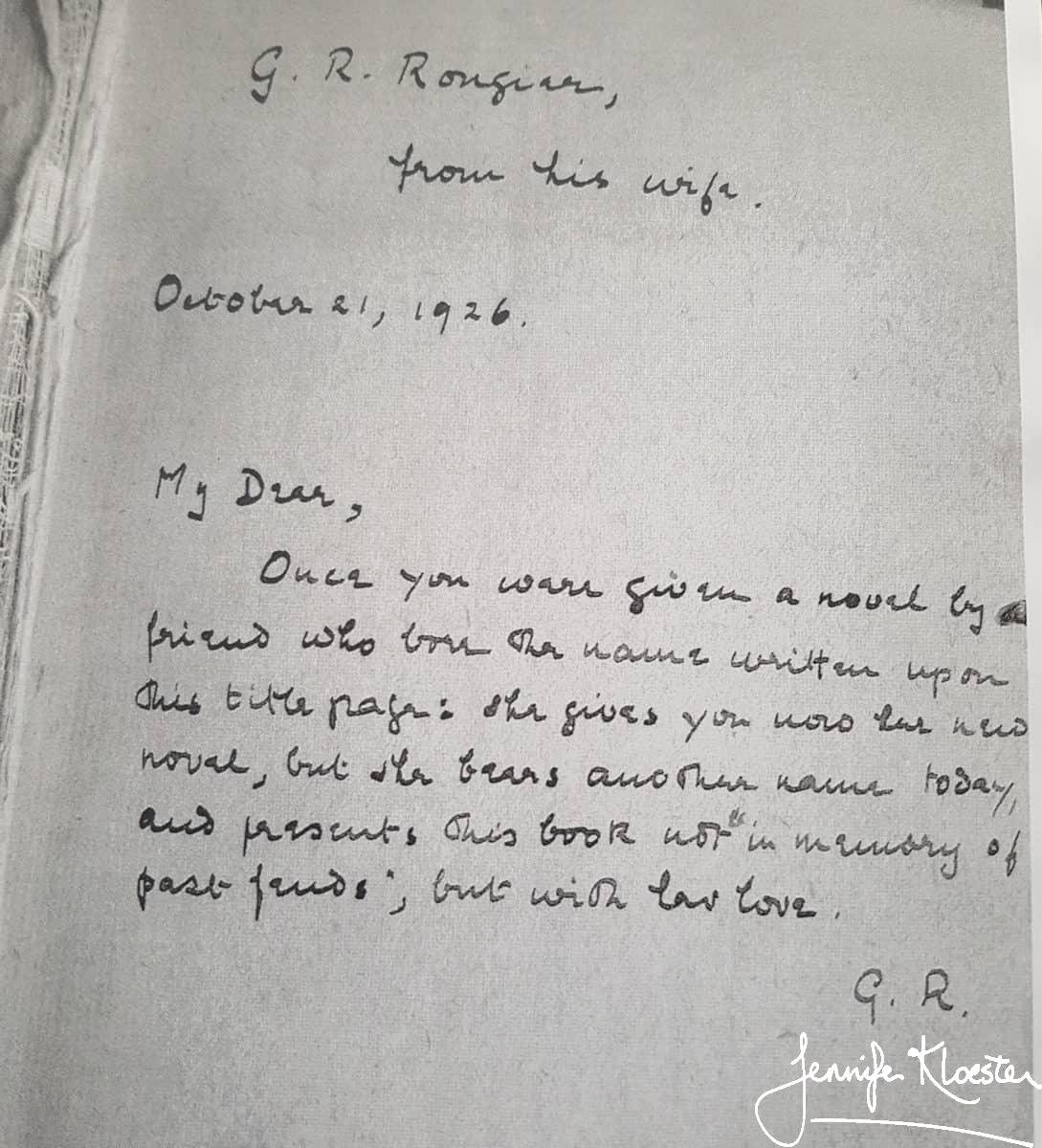
My dear,
Once you were given a novel by a friend who bore the name written upon the title page: she gives you now her new novel, but she bears another name today, and presents this book not in memory of past feuds; but with her love. G.R.
Dedication from Georgette Heyer to her husband Ronald Rougier on the flyleaf of her first edition copy of These Old Shades.
Bestseller!
An instant success, These Old Shades would go on to become a huge bestseller. In its first ten years it would be reprinted nearly thirty times. Readers everywhere loved the tale of the sinister Duke of Avon, nicknamed ‘Satanas’ and his encounter with the red-haired runaway, Leon. Having bought the ‘boy’ and made him his page, the Duke embarks on a journey of revenge, love and redemption. Leon becomes Leonie and with a brilliant supporting cast, including the duke’s irrepressible brother, Rupert, his spoilt sister, Lady Fanny, and the dastardly Comte de Saint Vire, Georgette carries the story to its dramatic climax. These Old Shades sparkles. It has an energy that, even today, still draws the reader into its vivid and vivacious world of colour and movement, adventure and pathos. A favourite re-read for many Heyer fans, this 94-year-old novel has endured beyond the wildest imaginings of its youthful author.
A very special edition
In 1937 Heinemann published a special leather-bound edition of Georgette Heyer’s bestselling book These Old Shades. She was one of fifteen eminent authors selected for the series, her novel standing alongside books by Joseph Conrad, Somerset Maugham, D.H. Lawrence, Will Cather and J.B. Priestley, among others. The new edition showed how much her publishers thought of her work and reflected her standing as a highly-regarded author. By 1937 Georgette had written 23 novels and established for herself a large, diverse and growing audience. Men and women devoured her books and her publishers eagerly awaited their ‘annual Georgette Heyer’ novel. These Old Shades would be just one of her brilliant achievements.

The special leatherbound edition published by Heinemann in 1937 
Georgette Heyer was one of fifteen eminent authors chosen for the special edition
A nod to Austin Dobson
The title to one of Georgette Heyer’s most popular novels has puzzled some readers. These Old Shades is a phrase taken from one of Austin Dobson’s poems entitled ‘Epilogue’. It was published in his Eighteenth Century Vignettes and the poem is a humorous comment on Dobson’s own fascination for eighteenth-century life. Dobson was one of the poets who, in the late 1800s, helped to revive many of the medieval poetic forms such as the villanelle, the rondeau and the ballade – poetic styles which Georgette’s father loved and which she would use in her novel, The Transformation of Philip Jettan. Austin Dobson’s entry in Britannica explains that it was his ‘polish, wit, and restrained pathos that made his verses popular’.
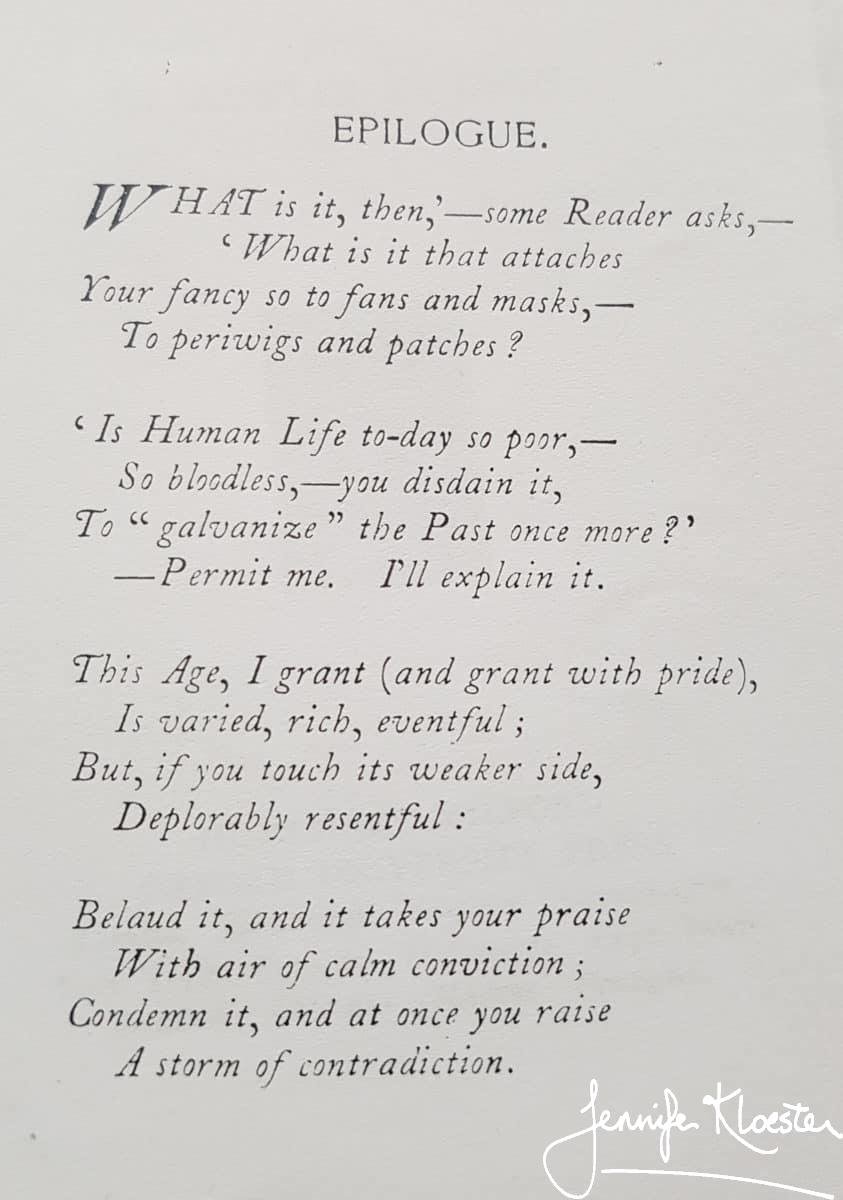
.The poet Austin Dobson was a favourite of Georgette’s father’s 
Georgette drew her novel’s title from Asutin Dobson’s poem




